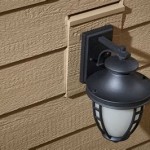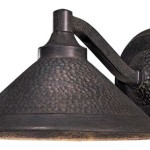Best Wood For Outdoor Furniture Use: Essential Considerations
Understanding the essential aspects of selecting the best wood for outdoor furniture is crucial for creating durable and aesthetically pleasing pieces that can withstand the elements and enhance any outdoor space. ### Durability Outdoor furniture must endure harsh weather conditions, including rain, sun exposure, and temperature fluctuations. Look for wood species with high natural resistance to rot, decay, and insects, such as teak, mahogany, or cypress. These hardwoods possess high density and durability, providing excellent longevity in outdoor settings. ### Resistance to Warping and Splitting Wood can warp or split due to moisture absorption and extreme temperature changes. Choose wood species with low moisture absorption and high dimensional stability. Teak, for example, has a high oil content that repels moisture, while mahogany has an interlocking grain structure that reduces warping. ### Comfort The comfort of outdoor furniture is equally important. Select wood species that provide a comfortable surface for seating and lounging. Teak, eucalyptus, and acacia offer smooth surfaces with natural oils that prevent splintering, ensuring a comfortable experience. ### Aesthetics The appearance of outdoor furniture plays a significant role in enhancing the overall aesthetic appeal of an outdoor space. Choose wood species that align with your design preferences. Teak has a rich, golden-brown color that ages gracefully, while mahogany offers a warm, reddish-brown hue. ### Maintenance Maintaining outdoor furniture should be effortless. Opt for wood species that require minimal care. Teak, with its natural resistance to decay, requires only occasional cleaning and oiling to preserve its beauty. Eucalyptus, another low-maintenance choice, is naturally resistant to termites and rot. ### Sustainability Consider the environmental impact of your wood choice. Select wood from sustainable sources that practice responsible forestry and reforestation. Look for certified wood, such as Forest Stewardship Council (FSC) or Sustainable Forestry Initiative (SFI) certified, to ensure responsible harvesting practices. ### Conclusion Choosing the best wood for outdoor furniture involves carefully considering durability, resistance to warping and splitting, comfort, aesthetics, maintenance, and sustainability. By understanding these essential aspects and selecting the right wood species, you can create outdoor furniture that is both functional and visually appealing, enhancing the enjoyment and value of your outdoor space for years to come.
The Best Wood For Outdoor Furniture Solved Bob Vila

What Is The Best Wood For Outdoor Furniture Tampa Bay Salvage

Outdoor Furniture Wood Types Buyer S Guide Luxury

9 Mighty Woods For Outdoor Projects Wood

The Best Wood For Outdoor Use Garden Furniture Projects

The Best Wood For Outdoor Use Garden Furniture Projects

Choosing The Best Wood For Outdoor Furniture Authenteak

9 Wood Species Best For Outdoor Projects

How To Choose The Best Wood For Patio Furniture Ions

Cedar Vs Pine Which Is Best For Outdoor Furniture Timber To Table







